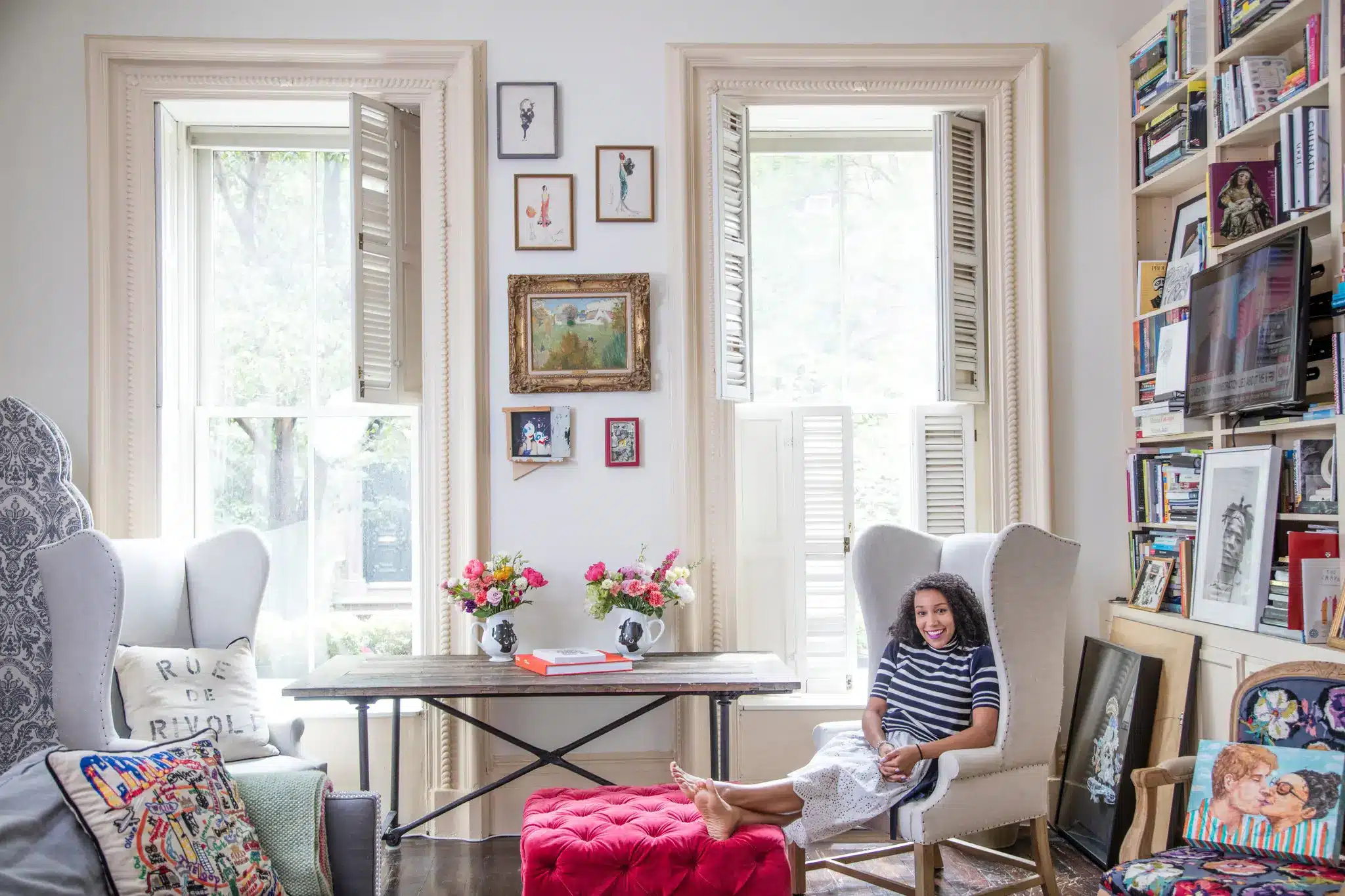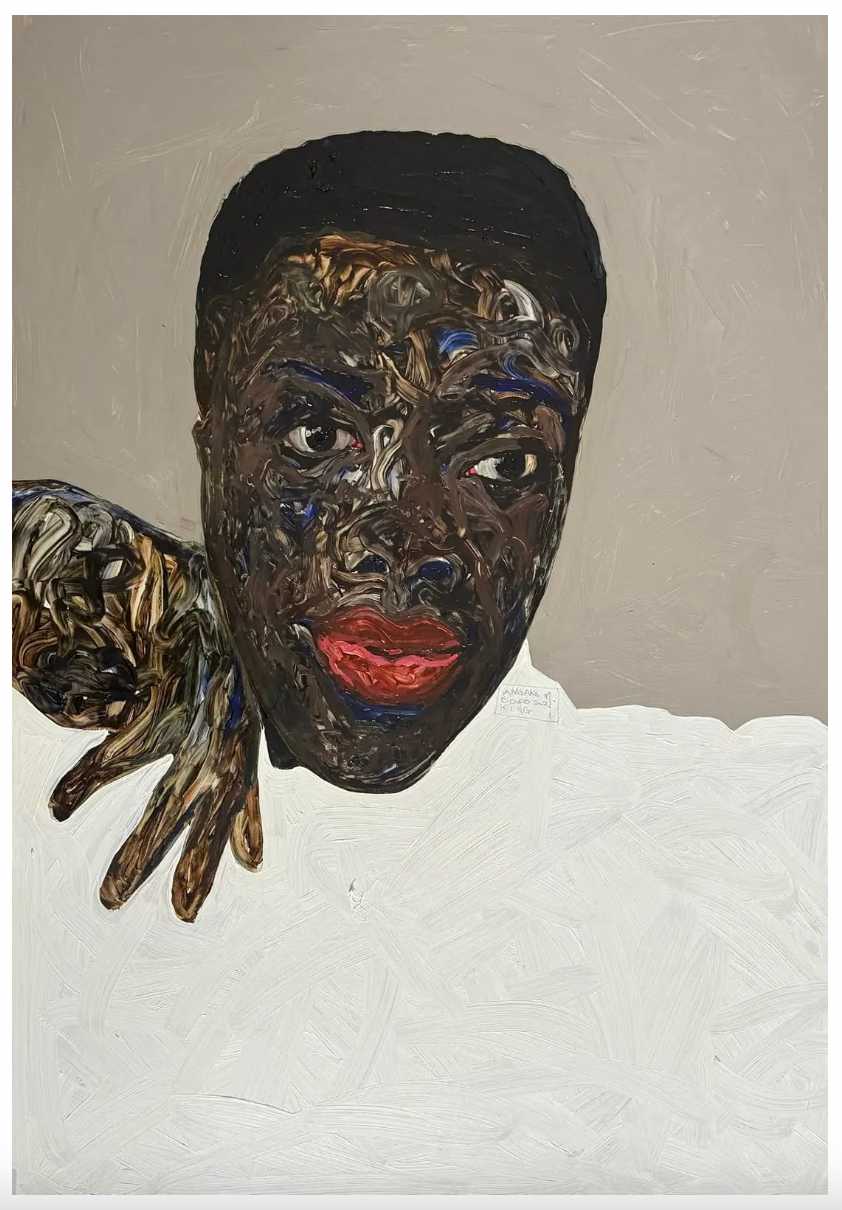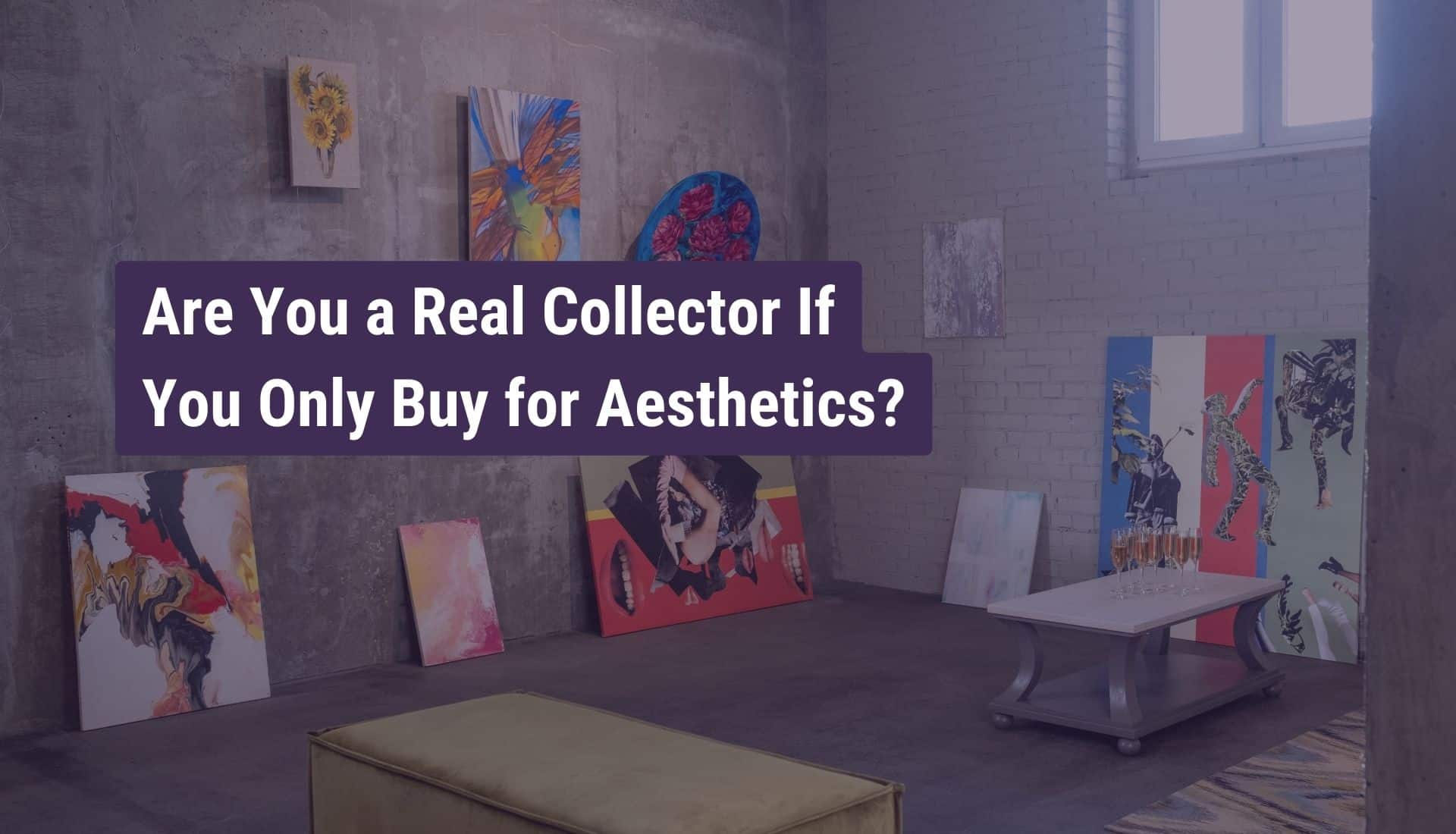The art world tends to romanticize the idea of a “true collector” as someone who goes beyond aesthetics. Some say buying art purely for aesthetics means missing the bigger picture of what it means to be a true collector.
The world of art collecting is filled with diverse motivations. Some buy for passion, others for investment, and many for cultural significance.
But can simply loving the way art looks on your wall be enough?
Who is a real art collector?
So, let’s say you’re visiting a gallery, and as you walk through, you take a moment to admire the beauty in each piece hung up on the walls.
Then, suddenly, a specific artwork completely captures your attention. Its colors, form, and energy draw you in; you know it belongs in your space. It’s love at first sight, so you buy it on the spot.
Does that make you a “real” art collector?
The term “real collector” carries different meanings depending on who you ask.
For some, it’s about curating a meaningful collection that reflects their values and beliefs.
For others, it’s about approaching art with thoughtfulness, either to preserve cultural heritage or to build wealth through investment.

Victoria Rogers Art Collection | Credit: Emile Bernard:Artists Rights Society (ARS), New York; Tony Cenicola:The New York Times
The Multiple Dimensions of Building an Art Collection
Many times, the journey to collecting art begins with a personal connection to the artwork.
Many collectors buy art because it resonates deeply with them, reflecting their values, experiences, and aspirations.
The colors of a painting could be a reminder of fond childhood memories, or a sculpture could pass a message of strength through adversity.
This transforms the artwork into more than just decor, representing the collector’s identity, holding emotional weight, and telling a personal story.
Art plays a crucial role in preserving and expressing our cultural identity. It could capture a community’s beliefs, traditions, and histories, preserving these narratives for future generations.
When a collector invests in pieces that hold cultural significance, they become a custodian of heritage, ensuring that the stories and memories of key historical events are never lost.
The economic aspect of collecting adds another layer of complexity.
Many are beginning to see art collecting as a key asset in wealth preservation and growth. High-net-worth individuals are increasingly incorporating art into their investment portfolios.
These collectors recognize its potential to appreciate significantly when held over a period of time, underscoring art’s role in global financial ecosystems.
Every Art Collector Is a “Real Collector”
But must a collector tick all these boxes to be considered legitimate? Doesn’t the essence of collecting lie in passion, whether it stems from aesthetic appeal, cultural appreciation, or investment potential?
After all, art speaks to us in different ways, and that diversity is what enriches the entire art community.
It should be less about rigid labels and more about our unique relationship with the art we choose to bring into our lives.
At its core, art is meant to be enjoyed. It exists to evoke emotions, spark conversations, and change perspectives. Aesthetics is deeply personal.
The renowned collector, Yves Saint Laurent, whose vast art collection was primarily curated based on personal taste explains that his choices spoke to him, transformed his living spaces, and became an extension of his identity.

Cross Section of Yves Saint Laurent’s Art Collection | Credit: MapsWonders
For some, the emotional and aesthetic connection to art is what they care about the most. A serene landscape painting that brings calm to a living room or a bold abstract injecting energy into a corporate office can transform and elevate the spaces we inhabit.
Art for aesthetics isn’t a shallow choice; it’s a celebration of how art can shape our environments, uplift our spirits, and provide joy.
For emerging collectors, aesthetics is usually the first step into an expansive journey of appreciation, and there’s nothing wrong with that!
Even if You Collect Solely for Aesthetics, Approach It Wholistically
While the beauty of art is undeniable, collecting solely based on aesthetics may lead to overlooking its deeper significance and value.
Artists often use their pieces to tell the stories of struggle, triumph, and innovation that define the times we live in.
For example, some African artists create artwork that may be aesthetically pleasing but carry deep historical and cultural narratives, capturing the essence of traditions and experiences unique to the African continent.

Amoako Boafo’s “Blank Stare” Artwork, a visually appealing piece that plays a role in contributing to a wider understanding of Black identity within contemporary art, recently Acquired by Tate Museum | Credit: MapsWonders
By engaging with the cultural context and artist’s story, collectors can better immerse themselves in dialogues that extend beyond the artwork itself.
Think about the role of ancient Egyptian murals in preserving the beliefs and rituals of their time. Purchasing art solely for its visual appeal can overlook these rich layers of meaning.
Aesthetic-driven purchases may also lack financial foresight. Art has become an increasingly popular investment vehicle, with works by emerging or established artists often appreciating significantly over time.
As the art market evolves, a well-curated collection holds the potential for long-term growth, able to yield better returns than traditional investments like stocks or real estate.
Of course, not all art needs to be an investment or a historical artifact.
However, the most meaningful collections combine personal enjoyment with recognition of the cultural, historical, and financial value that art represents.
By knowing an artist and the stories behind their pieces, you can connect better with pieces that reflect your values and perspectives, transforming a purchase into an overall meaningful investment.
Take, for instance, Wangechi Mutu, a Kenyan-born artist whose mixed-media collages blend African culture with Western influences to challenge traditional beauty standards. Her work invites collectors to think critically about representation and identity while still celebrating its striking visual elements.

Wangechi Mutu ‘Crocodylus’ sculpture at New Orleans Museum of Art Sydney and Walda Besthoff | Credit:
Another example is Chéri Samba, a Congolese artist, who sparks conversations about the potential of waste and the environmental issues faced by African communities through his vibrant paintings using recycled materials.

Cheri Samba, Le Petit Kadogo, 2004 | Credit: Museum of Modern Art
Similarly, Njideka Akunyili Crosby, a Nigerian artist, captures the nuances of belonging and identity in a globalized world with her collages and paintings that depict scenes of cultural hybridity and the immigrant experience.

Njideka Akunyili Crosby, Before Now After (Mama, Mummy and Mamma) | Credit: Whitney Museum of American Art
Understanding the narratives behind such works adds depth to a collection, turning it into a collage of stories rather than a mere display of beautiful objects.
Build a Collection That Tells Your Story
Balancing aesthetics and meaning doesn’t mean sacrificing one for the other. Instead, it’s about integrating both elements to curate a personal narrative.
Asking the right questions before purchasing can help ensure your collection reflects your aesthetic preferences and deeper passions.
When considering a new piece, ask yourself: Does this artwork resonate with my values and the goals of my collection? Is this a piece I would be happy to live with for years to come?
Of a truth, there’s no single path to being a real collector. What matters most is the intention behind your purchases and how they align with your values, passions, and goals.
Purchasing art offers more than visual pleasure. A thoughtfully chosen piece doesn’t just hang on a wall—it transforms your space, inspires fresh perspectives, and becomes a reflection of your values or sound financial decisions.
So, are you collecting for your eyes, heart, or legacy? Or perhaps all three?
Regardless of your reasons, at Artkliq, we believe what makes a collector “real” is the authenticity of their connection to the art they have chosen to own.
Want to learn more about the art of buying art with confidence and avoiding mistakes as you build your art collection? Join the Kliq – our community for emerging collectors where we share in-depth market insights, art collecting strategies, artwork by emerging African artists, and more each week!





0 Comments